-
WELCOME
General Information
Home Best Caribbean Island Anguilla Vacations Air Travel to Anguilla Car Rentals Weather -
SLEEP
-
REALTY & BUSINESS
-
THINGS TO DO
-
EAT
- SPECIAL
- KEEP IN TOUCH
- SAVE 10%
|
|
Anguilla homes use a combination of cast-in-place concrete and concrete block walls for the foundation. The walls that form up the cistern walls are used as part of the foundation wall system. This way, you are creating a containment system to store your water and holding up your house at the same time.
The walls of a cistern should always be constructed out of concrete due to its structural integrity. Most people will use concrete block for the balance of the foundation walls.
It is a quicker and less expensive way to construct.
This does not mean that you are building an inferior structure, merely utilizing the best material for the intended application without jeopardizing quality.
Our Home's Foundation Block Walls Start
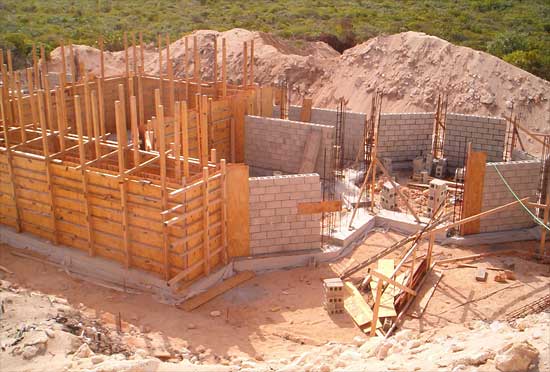
To lay block, there are a few necessary ingredients... concrete blocks, sand, cement and oh yes, water. That's not unique to building in the Caribbean, of course. But other considerations may be...
Anguilla has a public water infrastructure. But it has yet to reach us. In any event, it's a good idea to be self-sufficient (hence, the cistern).
Mike bought a 600 gallon container and placed it on the highest mound of sand closest to the site, giving the team the greatest pressure possible. It's not 60 psi, but it will do. This tank is refilled by a water delivery truck. Here's the tank...
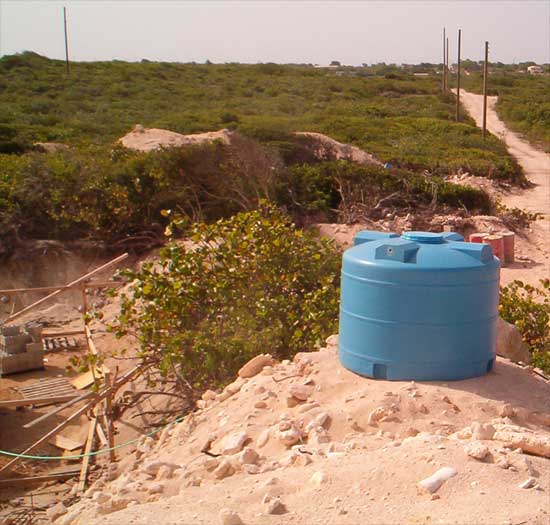
The lines are marked and the masonry cords are drawn. This will give the team walls that are level and plumb. The mortar is mixed and the work begins.
The lines you see on horizontal mortar joints are the masonry cords. These walls will later be covered with back fill, invisible from that point on. But the team is proud and precise, delivering perfection. Compare the clean, tight lines with those you've seen anywhere. This is a great group!
And it's not just about aesthetics. A well-laid block wall will stand better... no point loads, good adhesion, less eventualities.
Wherever you go in the world, there are always contractors who cut corners, like not taking the time to use masonry cords, or not buttering the vertical joints of the block with mortar. The end result and inevitable repercussions are felt by owner years after the builder has moved on.
It's so important go find a great team that really takes pride in its work. Here's a closeup at the work Toby, Curtis, Calvin and Jason do. Look at the clean straight lines and the even mortar...
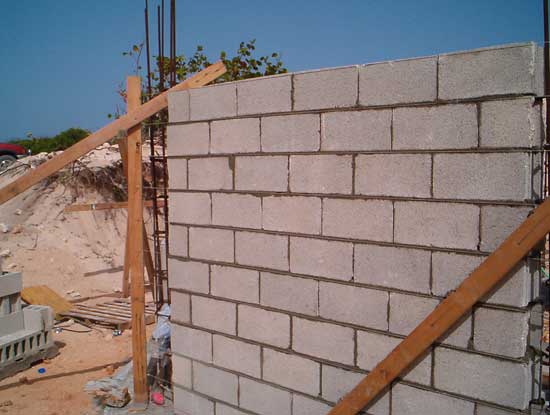
The starter bars and columns were included in the footing forms before the footing pour. So, as you see, they are in place and ready to become part of the walls being erected...
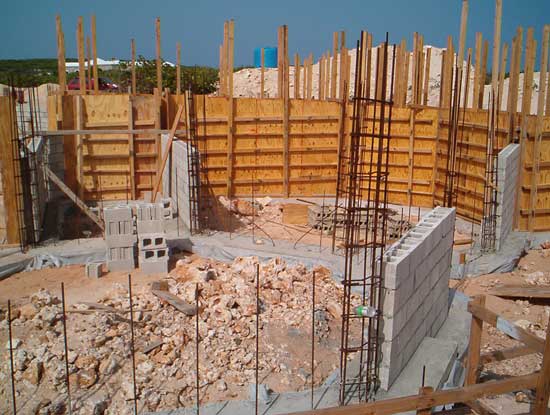
Constructing block walls here in Anguilla is done a little differently than the way it is practiced in many other places. In Canada for example, the columns and beams come up first. Then the blocks are laid to fill the open spaces.
In Anguilla, the concrete blocks are laid first, and then the columns and beams are formed and poured around the block walls. It makes a lot of sense and the Anguillians are master craftsmen when it comes to cement. Here's Jason forming a corner...
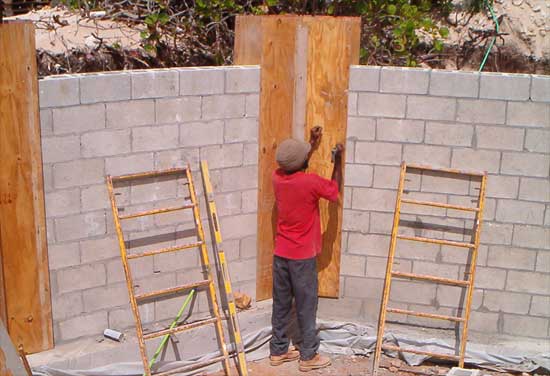
Our Anguilla home has many 45 degree corners. The work required to form up these corners is more than that required for standard 90 degree corners (and there are many more of them per room!). But soon it is done...

This process creates a more homogeneous wall. The concrete columns and beams, when poured around the concrete block walls, form a permanent, strong union. By completing the beam after the walls are placed, the cells (holes) of the concrete block are filled with concrete as the beams are poured... additional strength.
Curtis and Toby Watch Mike Swimming In The Cistern?
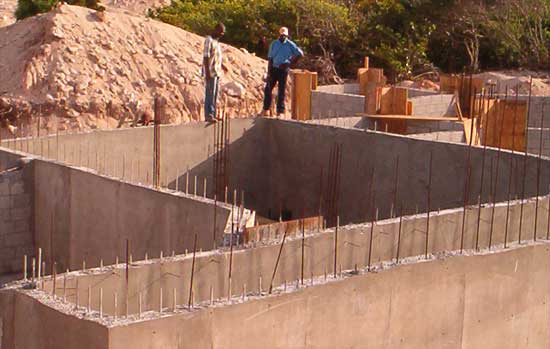
The formwork is removed only about a week after the pour is completed. Mike and the team are firm believers that slow moist cure = added strength. The forms not only act to hold the curing wet concrete in place but also encapsulate it maintaining the moisture for a longer period of time.
Here you can see the first form removed, the fine corner produced (near where Jason is perched like a falcon, ready to leap upon a friend who had been innocently passing by). Curtis follows close behind...
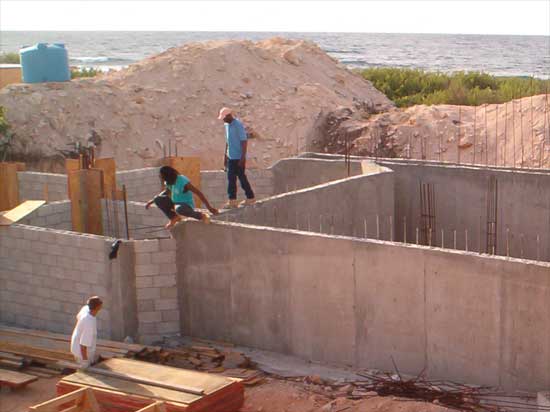
Many contractors are in a rush and will strip their formwork quickly so that they can move on. But I want our Anguilla home to last forever. We now have a complete foundation wall system in place....

Tranquility Beach
(Luxury Hotel & Residences)

Long Bay Villas:
The Ultra-Luxury Villas
Sky, Sea & Sand

Santosha Villa Estate:
Anguilla's Most Sophisticated
Ultra-Luxury Villa
Facebook Comments
Have your say about what you just read! Leave a comment in the box below.